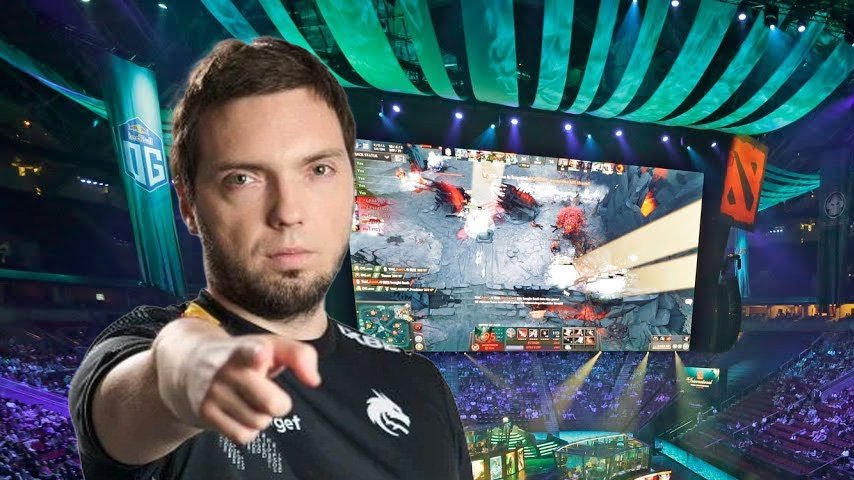The Post-DPC Power Vacuum: Charting the New Era of Competitive Dota 2
The world of competitive Dota 2 has undergone a seismic shift. With the dissolution of the official Dota Pro Circuit (DPC), the landscape has transformed from a structured, developer-guided system into a dynamic and fiercely competitive open market. This new era, while initially met with uncertainty, has given rise to a new hierarchy of tournaments, where third-party organizers now vie for the attention of players, organizations, and millions of fans worldwide. The latest Dota 2 News isn’t just about match results; it’s about the battle for prestige and viewership supremacy. Understanding what separates a blockbuster event from a standard tournament is now more critical than ever, as the formula for success redefines the future of Esports News and the broader gaming industry.
In this high-stakes environment, a handful of events have emerged as the new pillars of the professional scene. These are not just competitions; they are global spectacles, commanding massive viewership on streaming platforms and setting the narrative for the entire year. This article provides a comprehensive deep dive into the anatomy of these premier tournaments. We will dissect the key ingredients that contribute to their success, analyze the different models that have proven effective, explore the ripple effects on the entire competitive gaming ecosystem, and discuss the critical balance between creating an unforgettable spectacle and ensuring the long-term sustainability of the scene. From prize pools to production value, we will uncover what it truly takes to be crowned a king in the new age of Dota 2 esports.
The Shifting Landscape of Professional Dota 2
The end of the DPC created a power vacuum, and as the saying goes, nature abhors a vacuum. Established and new tournament organizers (TOs) rushed to fill the void, each bringing their own philosophy and resources to the table. This has resulted in a more diverse but also more top-heavy circuit. The current calendar is now anchored by a series of tentpole events that have become the de facto majors of the season. Success in this new ecosystem is measured by a combination of key factors that work in concert to create an unmissable experience for the global gaming community.
The New Pillars of a Premier Tournament
In the absence of Valve-designated “Majors,” a new set of criteria defines a top-tier event. The most immediate and attention-grabbing metric is, of course, the prize pool. Tournaments boasting multi-million dollar prize purses instantly signal their intent to be a major player, attracting the world’s best teams and, consequently, the highest viewership. However, money alone is not enough. Global prestige is paramount; winning a particular trophy must carry weight and contribute to a team’s legacy. This prestige is built through a combination of history, fierce competition, and powerful storytelling. The narrative that unfolds—of underdog runs, dominant dynasties, and regional rivalries—is what keeps fans invested beyond the raw gameplay of this iconic MOBA game.
Production Value and Talent Quality
Modern esports viewership demands a broadcast that rivals traditional sports. Premier events invest heavily in state-of-the-art production, featuring slick graphics, insightful analytics, and high-quality B-roll content that tells the players’ stories. This is where the technical side of gaming tech shines, from the director’s booth to the on-stage gaming hardware, including the high-end gaming PCs and 144Hz+ gaming monitors the pros use. Furthermore, the quality of on-air talent—the casters, analysts, and hosts—is crucial. A knowledgeable and charismatic broadcast team can elevate a great match into a legendary one, breaking down complex strategies for newcomers while providing deep insights for veterans. This level of quality is a major driver of traffic for game streaming platforms, making top-tier Dota 2 a cornerstone of Twitch News during event season.

Anatomy of a Blockbuster Tournament: Deconstructing Success
While the core ingredients for success are clear, the application of these elements has given rise to distinct and effective tournament models. Examining these different approaches reveals how varied strategies can lead to chart-topping viewership and industry-wide acclaim. We can broadly categorize the most successful modern events into two primary archetypes: the “Mega-Festival” and the “Legacy League.”
Case Study 1: The “Mega-Festival” Model
The Mega-Festival model is defined by its sheer scale and ambition. These are often multi-game spectacles, positioning Dota 2 alongside other esports giants like Counter-Strike and Street Fighter. The core philosophy is to create an “Olympics of Esports,” a can’t-miss global event that dominates the gaming news cycle for its duration. The primary driver of this model is an astronomical prize pool, often backed by significant external investment, which guarantees the participation of every elite team. The cross-pollination of fanbases is a key advantage; a fan tuning in for Valorant News might stick around to watch a high-stakes Dota 2 final. This model thrives on explosive hype, creating a condensed period of intense, wall-to-wall action that feels like the culmination of the entire esports year. The logistical challenge is immense, requiring a massive venue, flawless coordination across multiple game broadcasts, and a marketing campaign that appeals to the entire spectrum of PC gaming and even console gaming fans.
Case Study 2: The “Legacy League” Model
In contrast, the Legacy League model prioritizes narrative depth and sustained engagement. These tournaments, often spanning several weeks or even months, feature a lengthy online group stage that builds intricate storylines before culminating in a high-stakes LAN final. This format allows viewers to follow their favorite teams’ journeys, witnessing their evolution, struggles, and triumphs over an extended period. It provides a consistent stream of content, making it a reliable staple for the gaming community. The prize pools are still substantial, but the prestige is equally derived from the tournament’s history and the grueling path to victory. This model excels at building rivalries and emotional investment, turning the final bracket into a dramatic climax of season-long narratives. It provides a different kind of value, offering consistent, high-quality Dota 2 for weeks on end, which is a boon for both die-hard fans and the players who gain stable competition schedules.
Beyond the Prize Pool: The Ripple Effect on the Gaming Industry
The impact of these premier Dota 2 tournaments extends far beyond the players lifting the trophy. Their success or failure sends ripples throughout the entire gaming industry, influencing everything from player careers and organizational strategies to game development itself.
Implications for Players and Organizations
For professional players, this new era is a double-edged sword. The colossal prize pools at top events offer the potential for life-changing earnings, but the pressure is immense. An entire year’s success can hinge on a single tournament performance. This high-stakes environment forces esports organizations to be more strategic than ever in roster construction and player support, including mental and physical coaching. The financial disparity between the top few tournaments and the rest of the circuit creates a “feast or famine” scenario, making qualification for these events the primary goal for every professional team. This dynamic heavily influences contract negotiations, sponsorships, and the overall financial health of the organizations that form the backbone of the competitive gaming scene.

Influence on Game Development and the Streaming Ecosystem
While Valve has taken a step back from directly running the circuit, the success of these third-party events undoubtedly influences their approach to game development. Massive viewership numbers reaffirm the game’s health and can spur interest in new content, such as hero releases or major updates discussed in Steam News. A thriving competitive scene is the best marketing a game like Dota 2 can have. Simultaneously, these tournaments are the lifeblood of the Dota 2 streaming ecosystem. They drive enormous traffic to platforms like Twitch and YouTube, boosting the profiles of official broadcast channels, independent co-streamers, and content creators. The viewership data from these events is a powerful metric used to attract non-endemic sponsors to the world of esports, further legitimizing it as a mainstream entertainment medium. The narratives created here fuel countless hours of analysis, podcasts, and community discussion, keeping the game at the forefront of the cultural conversation.
The Path Forward: Sustainability vs. Spectacle
As the Dota 2 esports scene continues to evolve in this exciting new direction, the central challenge is balancing the explosive, attention-grabbing spectacle of mega-events with the long-term health and sustainability of the entire ecosystem. The current model, while producing incredible viewership and hype, is not without its potential pitfalls.
The Sustainability Question and Tier 2 Scene

The primary concern is the financial sustainability of tournaments funded by massive, external capital injections. While these events are a boon for the scene, an over-reliance on them creates fragility. What happens if this funding is reduced or redirected? A healthy ecosystem cannot be solely dependent on a few top-heavy tournaments. This structure also risks widening the gap between Tier 1 teams and the aspiring Tier 2 and Tier 3 scenes. Without a clear and supported path to the top, the talent pipeline can stagnate, ultimately harming the competitive integrity of the game in the long run. Organizers and Valve must consider how to nurture grassroots and regional competition to ensure a steady flow of new talent and compelling underdog stories.
Recommendations for a Balanced Future
The ideal future for Dota 2 esports is a diversified circuit. The massive, festival-style events should continue to serve as the pinnacle of the competitive year, the “Super Bowls” of the scene. However, these must be complemented by the consistent, narrative-building Legacy Leagues that provide a steady diet of high-level play. Furthermore, there is a critical need for a robust and well-supported lower-tier circuit. These smaller tournaments are the proving grounds for the next generation of stars and are essential for the scene’s longevity. Engaging the community through integrated in-game features, like supporter clubs or crowd-funded prize pools for smaller events, can also foster a more distributed and resilient ecosystem, ensuring that the excitement found in Dota 2 News is built on a solid and sustainable foundation.
Conclusion: A New Golden Age Forged in Competition
The post-DPC era of Dota 2 has ushered in a dynamic and exhilarating period for the game’s competitive scene. The absence of a centralized structure has sparked a new form of competition—not just between the teams, but between the tournament organizers themselves, pushing them to innovate and invest like never before. The result has been a series of blockbuster events that have captivated the global gaming community and set new standards for viewership and production. Success in this new landscape is a complex alchemy of massive prize pools, elite-level competition, masterful storytelling, and broadcast quality that rivals any major sport.
As we look to the future, the key will be to harness the energy of these premier spectacles while nurturing the entire competitive pyramid. By fostering a balanced ecosystem that includes mega-events, long-form leagues, and a thriving semi-professional scene, Dota 2 can ensure its legacy as a titan of esports for many years to come. The current landscape is a testament to the passion of its community and the timeless appeal of one of the most complex and rewarding games in the history of PC gaming.









